| | Description | Adaptation | Floral induction and initiation | Marketing | Field selection | Establishment | Fall stand maintenance | Stand management during seed production years | Insect control | Harvesting | Post-harvest management | Taking out the grass stand
Tall fescue (Festuca arundinacea Schreb.) is used for forage and turf purposes (Figure 1) around the world. Native to central Europe, the plant was introduced to the U.S. in the late 1800s and into Canada in the early 1920s from England.
Before the early 1980s, tall fescue varieties were developed mainly for forage production, but since that time, more turf-type varieties have been developed for recreational uses.
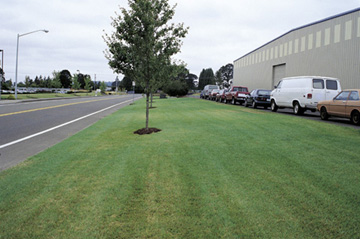
Figure 1. Tall fescue used in an urban setting.
The majority of certified turf and forage tall fescue seed is produced in the Pacific Northwest of the U.S. However, where tall fescue is used mainly for forage in the U.S. Midwest, the states of Missouri and Arkansas are the largest producers of common Kentucky 31 tall fescue seed, which is harvested from hay or pasture fields when seed prices are strong.
Strong market demand for turf-type varieties has resulted in a dramatic increase in tall fescue seed production in the U.S. over the past two decades (Figure 2). In Canada, seed production is of proprietary cultivars grown under production contacts. Seed yields vary with the variety grown and soil type, but under good moisture conditions or under irrigation, yields have ranged from 700 to 1,500 kg ha-1 and under minimal moisture from 200 to 900 kg ha-1. Generally, seed fields are kept in production for two to four years
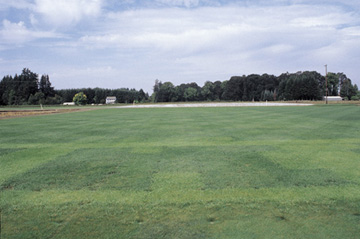
Figure 2. Tall fescue turf variety evaluation trial.
Description
Tall fescue is a deep-rooted, perennial bunchgrass. The coarse, tough roots can penetrate moist soils to a depth of 150 cm; some varieties may have short rhizomes. Tall fescue leaf blades are dark green, shiny and rough edged, 5 to 70 cm long and 3 to 13 mm wide. Auricles are short or absent.
The erect stems are hollow and can be up to 2 m tall and end in a broad, loosely branched panicle with variations that can be narrow with short branches 10 to 35 cm long (Figure 3). About 5 to 7 seeds are produced per spikelet. There are approximately 500,000 seeds kg-1, but this number will vary with the cultivar. The bushel weight for tall fescue is 10 kg.
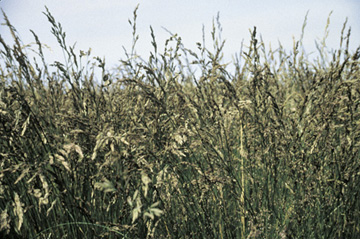
Figure 3. Tall fescue seed heads.
Tall fescue is cross-pollinated and self-incompatible, and it will readily cross with species such as meadow fescue and perennial ryegrass.
Adaptation
Tall fescue is a medium to long-lived (6-10 years), cool-season perennial grass. The main areas of adaptation in Western Canada are the moister parts of the Grey-wooded and Black soil zones or in the irrigated areas. Research indicates that commercial seed yields of tall fescue can be produced as far north as the Peace River region at latitudes of 55 to 58° N, which is 8° farther north than the previously suggested limit for the species in Canada.
Tall fescue has moderate winter hardiness (Figures 4 and 5). Winterkill may occur when winter onset is rapid and plants haven't started going dormant, during periods of drought, when snow cover is insufficient or when plant dormancy is broken too early. Although tall fescue does well under moist conditions, it is only moderately drought tolerant. It grows better in open, sunny locations.
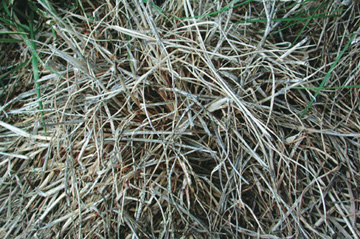 |  | 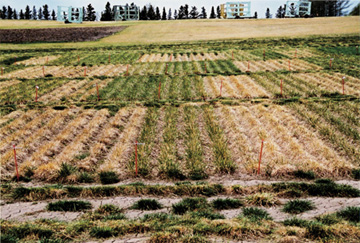 |
| Figure 4. Winter injury on tall fescue plant. |  | Figure 5. Winter hardiness differences in tall fescue varieties. |
Tall fescue is adapted to a wide range of soils, but does best on heavy soils or moist medium-to-heavy textured soils. It tolerates soil pH ranging from 4.5 to 8.0 and has one of the widest ranges of soil reaction tolerance of the commonly grown grass species. Alkalinity tolerance is moderate, while acidity and salinity tolerance is high.
Producers should be aware that seed yields of tall fescue varieties may differ in different agro-climatic areas as selections used in breeding programs vary in winter hardiness, parental background and other characteristics.
Floral Induction and Initiation
Most perennial cool-season grasses go through several stages in the initiation and induction of growing points. Initially, after the seed germinates, there is a vegetative or juvenile stage during which the growing points of the grass develop into leaves and stems. These new tillers remain vegetative through spring and summer.
In the fall or early winter, there is a response to low temperatures (vernalization) and/or day length (short day). This response induces the tiller to become reproductive and is called primary induction.
Many factors affect the induction of tillers:
- plant age
- variety
- nitrogen fertility
- planting date
- date of tiller formation
- clipping or grazing
- stage of plant development
- plant spacing
- temperature
Secondary induction or floral initiation is the next stage. This stage is affected by timing and environmental requirements. Many cool season grasses such as tall fescue require warm temperatures and long days in the spring for floral initiation and development of the seed head.
Most tall fescue cultivars require a vernalization period of cold temperatures (4°C or lower) before long day (>13 h) floral initiation in the spring. Vernalization requirements and critical day lengths for heading are closely related to the geographical origin of cultivars. The time between floral initiation and head emergence is four to five weeks. The growth of the inflorescence and the spikelets is indeterminate, so some florets will be fully developed, and others will be empty or sterile.
Anthesis occurs once the flowers have developed completely, and in western Canada, this stage will usually be around late June to early July. Pollen is released from the anthers in the late morning and is wind borne. The majority of seed heads undergoing anthesis are on tillers produced in the previous late summer and fall.
The main factors affecting anthesis are temperature and relative humidity. Night temperatures greater than 10°C cause an earlier onset and shorter duration of anthesis. Lower night temperatures decrease both flowering intensity and the number of flowers that open at peak anthesis. High day temperatures can cause blasting and poor seed set.
Rainfall can have a negative affect on anthesis by causing earlier and shorter duration of anthesis during the day; however, wet weather can extend the total time of anthesis.
Marketing
Contract production
Producers interested in growing tall fescue for seed should be aware of the time and dedication needed to grow a quality product. In western Canada, tall fescue is generally seeded alone and harvested for seed in the second, third and fourth years. There are both turf and forage-type varieties.
The majority of common seed production in North America is concentrated in the U.S. Midwest (Missouri) where seed production of the original standard variety, Kentucky 31, is a part of many livestock operations. Most certified U.S. tall fescue seed, primarily the turf-types, is grown in Oregon (Table 1).
| Table 1. U.S. fescue seed data – 2002 |
| State | # Farms | Acres | Production (kg) |
| Oregon | 807 | 188,101 | 109,984,399 |
| Missouri | 3,548 | 319,954 | 29,388,787 |
| Washington | 51 | 4,922 | 2,363,830 |
| Kansas | 165 | 21,323 | 2,086,350 |
| Arkansas | 147 | 11,331 | 1,127,410 |
| Oklahoma | 73 | 6,595 | 587,557 |
| Idaho | 21 | 1,743 | 335,848 |
| North Carolina | 126 | 3,263 | 201,145 |
| Kentucky | 41 | 2,469 | 193,935 |
| Tennessee | 59 | 1,728 | 149,905 |
| Alabama | 36 | 1,155 | 78,182 |
| South Carolina | 15 | 864 | 74,681 |
| Wyoming | 8 | 231 | 33,730 |
| Georgia | 39 | 537 | 32,079 |
| Mississippi | 7 | 286 | 14,161 |
Table includes all fescue types, but tall fescue makes up the majority.
Because there is very little production in Canada at present (Table 2), producers should have a marketing plan or a production contract with a seed company before establishing a seed field. In many cases, a local Canadian processor may act as the agent for the contracting seed company.
| Table 2. Pedigreed acres of tall fescue seed production in Canada – 1993 - 2004 |
| Year | PEI | Manitoba | Sask | Alberta | BC | Total |
| 1993 |  | 36 |  | 131 |  | 167 |
| 1994 |  | 36 | 35 | 71 |  | 142 |
| 1995 |  | 59 | 85 | 106 |  | 250 |
| 1996 |  | 105 | 85 | 662 | 187 | 1,039 |
| 1997 |  | 519 |  | 2,335 | 547 | 3,401 |
| 1998 |  | 651 | 140 | 5,542 | 1,358 | 7,691 |
| 1999 |  | 1,230 | 190 | 13,338 | 1,772 | 16,530 |
| 2000 |  | 1,558 | 85 | 14,403 | 1,682 | 17,728 |
| 2001 | 27 | 2,684 | 285 | 4,443 | 2,209 | 9,648 |
| 2002 | 27 | 4,976 | 290 | 4,931 | 1,657 | 11,881 |
| 2003 |  | 4,484 | 470 | 2,141 | 1,090 | 8,185 |
| 2004 |  | 3,728 | 175 | 1,173 |  | 5,076 |
Canadian Seed Growers Association, Progress Reports 1993-2004.
Most tall fescue in western Canada is grown under a contract. A production contract is an agreement signed between a seed company and grower in which the grower agrees to produce seed of a specific variety or from a specific land area. The seed is sold to the company at a specified price (can be the set price at time of delivery) as long as the seed meets the quality standards outlined in the contract (Figure 6).
If the seed does not meet the standards as outlined, the price to the producer will be substantially reduced. Seed produced under contract is generally grown for certified production. Production contracts help ensure the producer's profit potential, but it is very important for producers to fully understand the contract before signing.
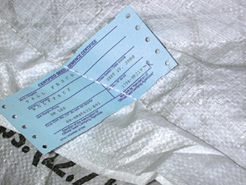
Figure 6. Tall fescue seed bag label.
Growing tall fescue under production contracts reduces the risk of price volatility in the market, as growers know the price they will receive. A rough estimate of yields and costs are also known, so the grower can estimate the amount of revenue that should be generated by the crop.
Pedigreed seed requirements
Producers growing pedigreed seed (Breeder, Foundation or Certified) need to consider several requirements before establishing a seed field. Two important requirements are the previous crops grown on the land and the isolation distance from other tall fescue varieties.
Seed producers should refer to the Canadian Seed Growers Association (CSGA) handbook Regulations for the Production of Pedigreed Seed Circular 6-2005 for details on specific requirements for tall fescue seed production.
Tall fescue grown for export may require alternative standards and/or inspection guidelines set by the importing country. Markets will demand seed that is free of wild oats, quackgrass, foxtail barley, other grasses and cleavers.
Quality
The price received by the grower for tall fescue seed (Figure 7) is determined by the variety contracted and the quality of the seed produced. Quality is evaluated in terms of weed seed contamination, germination and purity. Specific weed seeds can cause problems depending on the destination and end use of the final product.
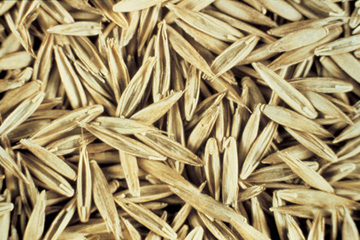
Figure 7. Tall fescue seed.
Some of the main weed seed contaminants that reduce the grade of tall fescue seed are quackgrass, wild oats, foxtail barley, other forage or native grasses and cleavers. Growers must be especially aware of weeds that lead to grade reductions and discounts on seed for both domestic and foreign markets.
Seed processors cannot clean out all types of weed seed, particularly those similar in size, shape and weight to the fescue seed. Sometimes, smaller weed seeds like narrow-leaved hawk's-beard, mustard and stinkweed are problems, especially when the level of contamination is high.
Varieties
There are turf and forage-type varieties of tall fescue. The turf-type varieties generally tend to produce higher seed yields with less vegetative growth than forage-types. Grower choices will be made on the varieties that companies are contracting, the winter hardiness, height and maturity of varieties being offered and on aftermath use.
For example, a seed producer may opt to grow a forage-type variety if he also has a livestock operation as his options for aftermath utilization and post-harvest stand management would fit in well with his situation.
Since most tall fescue will be grown under contract and there are wide variations in seed yield and growth characteristics (Figure 8), it is important for the producer to obtain seed yield information on any proprietary variety before entering into a contract.
The Western Canadian Grass Seed Testing program, an industry-sponsored testing program, can be a source of yield information for some tall fescue varieties. The latest information can be accessed from the web.
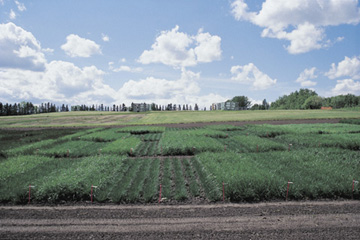
Figure 8. Tall fescue variety seed yield evaluation trial at Beaverlodge, AB.
Field Selection
Tall fescue does best on moist, heavy to medium soils that have high organic matter, but it can be established on a variety of soil types because of its wide tolerance to different soil conditions. Avoid rocky areas and areas contaminated with weed seeds. Tall fescue should be established on level to gently sloping land to minimize run-off and water erosion, and this approach will usually result in more uniform crop maturity. Select fields where snow cover is generally adequate as tall fescue can winterkill.
According to the CSGA Regulations for the Production of Pedigreed Seed Circular 6-2005 crops planted with Breeder, Foundation or Registered seed for certified status must not be grown on land that grew a crop of the same kind in the preceding two years.
Weeds
Tall fescue must be established in fields free of perennial weeds and other volunteer grass crops. There is zero tolerance for seeds of quackgrass (Figure 9) and wild oats in tall fescue seed, and producers are encouraged to adopt a zero tolerance program for dealing with all weeds.
Seed of other weeds such as foxtail barley, Canada thistle, perennial sow-thistle, Persian darnel, annual bluegrass, rough bluegrass, fowl bluegrass, downy brome and volunteer grasses are difficult to remove by cleaning. Applying glyphosate pre-harvest or post-harvest in annual cropping rotations for several years before seeding tall fescue can minimize most perennial weed problems. Even moderately weed-infested fields should not be used for establishing tall fescue for seed. Hand roguing or spot spraying of problem grasses will be required to meet quality standards.

Figure 9. There is zero tolerance to quackgrass seed contamination in tall fescue seed.
Herbicide residues
It is important to know the cropping history and associated cultural practices of the proposed planting site. Previously applied residual herbicides can seriously affect grass seedlings. Table 3 outlines herbicides that may be of concern when seeding tall fescue. The level of herbicide residue depends on the soil type, moisture, organic matter and pH.
To avoid problems, read the herbicide label for current, detailed information on grass cropping restrictions. Keep detailed field records and plan crops to avoid seeding tall fescue into soils with injurious levels of herbicide residues.
Before leasing or purchasing land, obtain a record of the herbicides used during the past five years. The lease should also include a statement regarding liability if a herbicide residue is found.
| Table 3. Grass cropping restrictions for currently used herbicides |
| Herbicides | Grass cropping restrictions |
Absolute
Ally
Assert
Escort
Muster
Muster Gold II
Odyssey
Prism
Pursuit
Pursuit Ultra
Unity | Seedling grasses may be affected for one or more years after application. Conduct a field bioassay (a test strip grown to maturity) the year before planting grass. The yield from the test strip should be compared to the yield from an adjacent untreated area. |
|
|
|
|
|
|
|
|
|
|
| Amitrol 240 | After a post-harvest treatment, do not plant to grass for eight months. |
Atrazine
Laddok
Primextra II Magnum
Princep Nine-T | May cause severe injury to grass one or more years after application. |
|
|
|
| Banvel II | Grasses may be affected if high rates were used for perennial weed control the previous year. |
Edge
Fortress
Treflan/Rival/
Bonanza/Advance/
Heritage | Grasses should not be grown in the year following a treated crop. High application rate caused by overlapping, improper calibration or non-uniform application may reduce grass stands the following year. Drought conditions in the year of treatment may result in higher levels of carryover into the next year. |
|
|
|
|
| Sencor | Grasses should not be grown for 24 months following application on irrigated alfalfa. |
Sundance
Everest
K2 | Do not plant for at least 22 months following application. A field bioassay must be conducted the year prior to planting grasses to confirm crop safety. The Sundance label contains good directions on how to conduct a field bioassay. |
|
|
| Tordon 22K | When applied as a spot treatment on crop land, Tordon 22K may persist in the soil for up to five years and prevent the establishment of grasses in these spots. Manure from vegetation treated with Tordon 22K should not be applied to sensitive crops such as grasses. |
| Velpar | Conduct a field bioassay prior to growing a grass. Wait at least 24 months after the last Velpar application before seeding a field bioassay. |
(Refer to the latest Alberta Agriculture, Food and Rural Development publication Crop Protection, Agdex 606-1, Saskatchewan Agriculture, Food and Rural Diversification Guide to Crop Protection, Manitoba Agriculture, Food and Rural Initiatives Guide to Crop Protection or the herbicide label for specific recommendations).
Establishment
Seedbed preparation and seeding depth
A fine, firm seedbed is the key to successful tall fescue establishment with a zone of 5 to 8 cm free of large lumps and air pockets. When a seedbed is properly packed, tractor tire marks will be barely visible. A firm seedbed allows for a shallow, uniform seeding depth and ensures the seed has close contact with soil moisture, resulting in rapid germination and early seedling root growth.
Seedbed preparation in the previous fall or very early in the spring promotes the germination of some weed seeds and reduces soil moisture losses from excessive cultivation. Tall fescue can be seeded one to two weeks after the last spring cultivation and sprayed with a glyphosate product before seedling emergence (Figure 10).
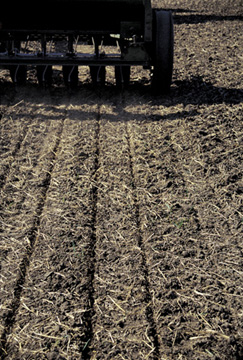
Figure 10. Seeding tall fescue into a firm, tilled seedbed.
Direct seeding into crop stubble has been very successful when establishing tall fescue. Seeding directly into canola or pea stubble is preferred over seeding into cereal stubble (Figure 11). No herbicides are available to spray out volunteer cereals in seedling tall fescue stands, and if not controlled, these volunteers are very competitive on seedling plants. When direct seeding into stubble, a pre-seeding or pre-emergent application of glyphosate is necessary.
Soil tests should be conducted to determine nutrient requirements for fertilizers that can be applied before or at seeding. If phosphorus and potassium are required, apply a sufficient amount before seeding to provide adequate nutrients to last the expected life of the stand. Once the stand is well established and weeds have been controlled, nitrogen may be applied to increase the development of tall fescue seedlings.
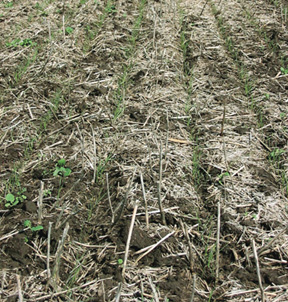
Figure 11. Direct seeding tall fescue into canola stubble is an excellent method of stand establishment.
Tall fescue seed can be readily seeded using conventional seeding equipment such as press drills, hoe drills, air drills and air seeders. The seed is easy to handle and does not require any mixing with fertilizer during seeding.
Use equipment that will provide good seeding accuracy and depth control. Packer wheels increase seed-to-soil contact to enhance moisture availability. Tall fescue should be seeded no deeper than 1.3 to 2.5 cm, with the deeper depths used on light-textured sandy soils.
Row spacing, seeding rates and seeding date
Tall fescue requires the equivalent of one season's growth before producing seed and generally establishes better when seeded early in the growing season. The time of seeding depends on factors such as the availability of soil moisture for germination and early seedling growth, when soil temperatures reach 4 to 7°C and pre-seeding weed control has been completed.
Row seeding generally results in higher seed yields than solid seeding, and optimum row spacing varies, depending on moisture availability and machinery capabilities. Row spacings of 35 to 46 cm and seeding rates ranging from 3 to 5 kg ha-1 (50-75 seeds m-1 row) are generally used (Figure 12). Narrower row spacings may become sod-bound sooner than wider spacings.
In the Peace River Region, research indicates seed yield can be optimized for at least 3 consecutive years by establishing an initial density of 20 to 100 plants m-2 in rows 20 to 60 cm apart. If maximizing first-year seed yield is a priority, the initial establishment should be a density of 25 to 50 plants m-2 in rows 20 to 40 cm apart.
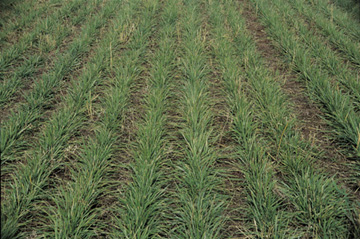
Figure 12. Tall fescue seeded in rows generally results in higher seed yields than broadcast seeding.
Companion cropping
Companion cropping is not recommended for tall fescue establishment and will significantly affect the economic return to the producer (Table 4). Tall fescue seedlings are not competitive, and companion crops will delay plant development and reduce first-year seed yields. Weed contamination may also be higher when using a companion crop.
| Table 4. Effect of companion cropping on first-year seed yields (kg ha-1) of irrigated tall fescue at two locations in southern Alberta |
| Treatment | Bow Island | Brooks |
 | 1998 | 1999 | 2000 | 3 yr. total | 1998* | 1999 | 2000 | 3 yr. total |
| Seeded alone | 989 | 2,377 | 2,245 | 5,611 | 357 | 1,732 | 1,789 | 3,878 |
| Barley silage | 538 | 1,764 | 1,084 | 3,386 | 607 | 1,144 | 982 | 2,733 |
| Barley grain | 647 | 1,952 | 1,105 | 3,704 | 423 | 1,050 | 611 | 2,084 |
* Winterkill damage.
Weed control in the year of establishment
Weed competition during stand establishment will reduce the number and size of tall fescue plants in the fall, reducing seed yields the following year. Methods of weed control in the year of establishment include cultivation before seeding, non-selective herbicide application before seeding or following seeding but before emergence, post-emergent herbicide applications and mowing.
Glyphosate applied pre-emergent will control the early emerging weeds to give a competitive advantage to the crop. If applied after seeding, glyphosate needs to be sprayed before tall fescue seedling emergence (no later than seven days after seeding).
Herbicides are available to control broadleaved weeds in seedling tall fescue, but few options exist for wild oat control and no options for volunteer cereal control. A few products are registered for use on seedling (plants within three months of emergence) tall fescue, but trials conducted in western Canada have shown that there are a number of potential herbicides (Tables 5, 6 and 7). Some herbicides should not be used on seedling tall fescue.
Herbicides are usually applied on seedling grasses at the 2 to 4-leaf stage, which is crucial for crop safety and in preventing reductions in future seed yields. Herbicide selection is based on several criteria:
- weeds present
- effectiveness of the herbicide on these weeds (refer to the herbicide label or the provincial crop protection guide for the weeds controlled or suppressed)
- tolerance of seedling tall fescue to the herbicide (Figure 13)
- cost of the herbicide
Only herbicides that are registered for use on tall fescue can be recommended.
| Table 5. Seed yields the year after spraying seedling tall fescue with herbicides for broadleaved weed control in the spring |
| Herbicide | Average % yield of the untreated check seed yield |
 | 1 x recommended rate* of the herbicide | 2 x recommended rate of the herbicide |
| 2,4-D amine | 99 (5)** |  |
| MCPA amine | 87 (5) |  |
| Banvel II + 2,4-D amine | 96 (7) |  |
| Target | 108 (5) | 98 (4) |
| Buctril M | 99 (8) |  |
| Attain | 107 (10) | 110 (8) |
| Curtail M | 119 (2) | 94 (1) |
| Prestige | 115 (4) | 109 (3) |
| Spectrum | 105 (1) | 90 (1) |
| Refine Extra | 103 (9) | 88 (7) |
| Refine Extra + 2,4-D ester | 101 (7) |  |
* Recommended rate refers to application on annual crops such as cereals or oilseeds.
** Number of trial sites included in the average % yield. Trials conducted at Edmonton, Beaverlodge and Rycroft, AB, Baldonnel, BC, Outlook, SK, and Arborg, MB, from 1998 to 2002.
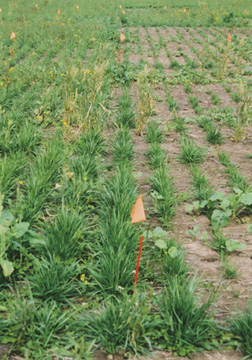
Figure 13. Sensitivity of seedling tall fescue to grassy weed herbicides.
| Table 6. Seed yields the year after spraying seedling tall fescue with herbicides for grassy weed control in the spring |
| Herbicide | Average % yield of the untreated check seed yield |
 | 1 x recommended rate* of the herbicide | 2 x recommended rate of the herbicide |
| Puma Super | 110 (10)** | 98 (6) |
| Puma Super + Buctril M | 102 (5) | 104 (3) |
| Assert | 102 (1) |  |
| Avenge | 91 (2) |  |
| Mataven | 114 (1) |  |
| Achieve | 71 (3) | 63 (3) |
| Everest + 2,4-D ester | 71(2) | 0 (2) |
* Recommended rate refers to application on annual crops such as cereals or oilseeds.
** Number of trial sites included in the average % yield. Trials conducted at Edmonton, Beaverlodge and Rycroft, AB, Baldonnel, BC, Outlook, SK, and Arborg, MB, from 1998 to 2002.
| Table 7. The effect of herbicides on seedling tall fescue |
| Currently registered | Potential for a Minor Use Registration | May cause severe injury |
| Attain | Basagran | Achieve |
| Avenge 200-C* | Curtail M | Ally |
| Banvel II | DyVel DS | Assure |
| Banvel II + 2,4-D | Frontline | Edge |
| Banvel II + MCPA | Frontline 2,4-D | Everest |
| Buctril M | Pardner | Horizon |
| 2,4-D | Prestige | Odyssey |
| Embutox 625* | Puma Super | Poast Ultra |
| Lontrel | Spectrum | Prism |
| MCPA | Target | Pursuit |
| Refine Extra | Trophy | Select |
| Triumph Plus |  | Sundance |
| Tropotox Plus |  | Treflan/Rival |
 |  | Venture |
* Registered for forage production.
Refer to the latest Alberta Agriculture, Food and Rural Development publication Crop Protection, Agdex 606-1, Saskatchewan Agriculture, Food and Rural Diversification Guide to Crop Protection, Manitoba Agriculture, Food and Rural Initiatives Guide to Crop Protection or the herbicide label for specific recommendations.
Wick applicators have been used to control grassy weeds by applying a 33 per cent solution of a glyphosate product when the weeds are taller than the seedling tall fescue. Generally, two passes are made in opposite directions. As well, one or two mowings (Figure 14) may be used to prevent weeds from going to seed during the establishment year. Controlling wild oats in the year of establishment is critical and will result in higher seed yields the following year (Table 8).
| Table 8. Wild oat control on seedling tall fescue and the effect on first-year seed yields (ECW 9852747-Rycroft AB 1996/1997). |
| Treatment | Seed yield as % of check |
| Wild oat herbicide | 250 |
| Mowed 1X | 200 |
| Check | 100 |
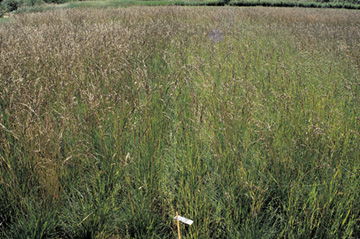
Figure 14. Effect of wild oat competition on seedling tall fescue the year after establishment.
Irrigation
In tall fescue fields, frequent light sprinkler irrigations during establishment will ensure that adequate moisture is available for germination and seedling growth. This irrigation will also reduce soil crusting.
During periods of high evaporation, irrigation intervals of 3 to 4 days may be needed until the grass is 10 cm high, after which intervals can be longer to encourage deep root development. The final fall irrigations should provide adequate water to maintain soil moisture at the highest field capacity possible going into winter.
Fall Stand Maintenance
Fertilization
As floral initiation takes place in spring, fertilizer nutrients are more effective if they are available to the crop soon after spring thaw. Nitrogen applications in late fall after plants have gone dormant are recommended as this practice ensures nutrients are available to the plant in early spring. Spring weather conditions can sometimes delay spring fertilizer applications. As well, fertilizer is generally cheaper in the fall than in the spring.
Rates of nitrogen on first-year fields will depend on the size of the plants going into winter. Research in the Peace River Region indicates that nitrogen rates of 100 to 150 kg ha-1 maximized seed yield in the first production year. Under irrigated conditions in southern Alberta, rates of 100 to 125 kg ha-1 are applied for first-year seed stands. In Manitoba, 70 to 80 kg ha-1 of nitrogen is suggested for first-year seed stands.
Other nutrients such as phosphorus, potassium and sulphur may be required, particularly as the stand ages. Soil testing will help determine if any of these nutrients are required.
Form of nitrogen application
Care must be taken in choosing what form of nitrogen to use because most of the fertilizer applied to established tall fescue stands is broadcast. Ammonium nitrate (34-0-0) is the preferred choice over urea (46-0-0) for broadcast applications because urea has a greater potential for losses through gassing off (volatilization). Urease inhibitors applied to urea fertilizer may reduce these potential losses.
The risk of nitrogen losses when using urea is greatest for soils that are sandy with high pH. High urea losses can also occur when there are high winds, high levels of surface residue, wet soil surfaces and soil temperatures above 10°C.
Conditions favorable for using urea fertilizer are a dry, unfrozen soil surface with rainfall or snow occurring shortly after application to move the urea into the soil and prevent losses to the air. Some producers apply urea on top of 5 to 10 cm of snow when the ground is not frozen and the snow is expected to melt.
Fertilizer should not be applied on top of frozen ground covered with several inches of snow, as this situation prevents the fertilizer from moving into the soil, making it susceptible to runoff in the spring.
Stand Management During Seed Production Years
The major factors affecting seed yields of tall fescue are the timing and amount of irrigation water, timing and method of weed control, soil fertility levels and weather. Extremes of high or low temperature during flowering may reduce seed yields irrespective of stand management.
Irrigation
Early spring moisture is necessary for early vigorous stand growth, and producers should begin irrigating as early as possible to ensure high field moisture capacity. Irrigation is most important for seed production during the critical period that starts just before flowering and until pollination is completed. Inadequate moisture at this time will result in reduced seed yields. Producers should irrigate at or before the boot stage and until after flowering.
Irrigation frequency will depend on the soil type, temperature, rainfall and wind. Irrigate early to avoid excess irrigation later when lodging can be a problem and mold can occur under the lodged canopy, especially on heavy soils. Total moisture consumption (including precipitation) until the end of July will range from 55 to 65 cm.
Water penetration to 60 cm indicates an adequate amount of water has been applied. The idea is to have adequate soil moisture available for the tall fescue plant from pollination until seed maturity. Established stands require less frequent irrigations, but will need more water per application than new seedings, as water will penetrate the soil more readily.
Uniform irrigation will promote uniform seed ripening, but too much soil moisture could delay seed maturity. As soil moisture declines, tall fescue seed matures rapidly; therefore, seed maturity will have to be monitored as shattering can occur before the field can be harvested.
Weed control for established tall fescue
Weed control is essential to produce high quality tall fescue seed. Maintaining a clean, tilled or mowed field border will assist in preventing weed seeds, rhizomes and roots from moving into the seeded field. Mowing perennial grasses and weeds around sloughs, shelterbelts, fence rows, drainage areas and roadsides will also help prevent seeds from contaminating the grass stand. Off-type plants and weeds within rows can be removed to reduce contamination and maintain seed quality (Figure 15).
Wild oat and quackgrass are the main weeds of concern for export markets; however, Canada thistle, narrow-leaved hawk's-beard, cleavers, foxtail barley and fowl bluegrass are also common problem weeds found in established tall fescue crops. Hand roguing and/or spot spraying of grassy weeds may be required.
Herbicide selection will depend on the weeds present, tolerance of the tall fescue, stage of the crop, cost and rotation of herbicide groups. Some damage from a herbicide application may be acceptable to a producer if the application controls troublesome weeds that could result in a loss of grade (Figure 16).
Tables 9 and 10 provide an indication of the tolerance of established tall fescue to a number of grassy weed and broadleaved weed herbicides. The higher the number of trial sites, the more confidence that can be put in the seed yield information provided.
Table 11 lists the herbicides currently registered for use on established tall fescue, the herbicides causing no injury to moderate injury and the herbicides causing severe injury to established tall fescue in research trials, usually applied in the spring before the shot blade stage. Only herbicides that are registered for use on tall fescue can be recommended.
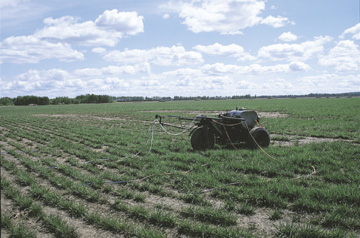 |  | 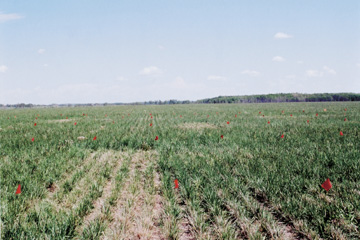 |
| Figure 15. Modified ATV used for spot spraying in tall fescue seed fields. |  | Figure 16. Wild oat herbicide damage on established tall fescue. |
| Table 9. Seed yields after spraying established tall fescue with herbicides for grassy weed control in the spring |
| Herbicide | Average % yield of the untreated check seed yield |
 | 1 x recommended rate* of the herbicide | 2 x recommended rate of the herbicide |
| Puma Super | 99 (21)** | 98 (18) |
| Puma Super + Buctril M | 95 (4) | 81 (4) |
| Puma Super + Curtail M | 88 (2) |  |
| Assert | 84 (9) | 54 (7) |
| Avenge | 96 (12) | 95 (12) |
| Mataven | 113 (1) | 86 (1) |
| Achieve | 51 (3) | 47 (2) |
| Horizon |  | 62 (1) |
| Everest + MCPA amine | 25 (4) | 18 (3) |
| Fusion | 37 (1) | 29 (1) |
* Recommended rate refers to application on annual crops such as cereals or oilseeds.
** Number of trial sites included in the average % yield. Trials conducted at Edmonton, Beaverlodge, Woking, Deadwood, Wembley and Falher, AB, Baldonnel, BC, Outlook, SK, and Arborg, MB, from 1998 to 2004.
| Table 10. Seed yields after spraying established tall fescue with herbicides for broadleaved weed control in the spring |
| Herbicide | Average % yield of the untreated check seed yield |
 | 1 x recommended rate* of the herbicide | 2 x recommended rate of the herbicide |
| 2,4-D amine | 95 (4)** |  |
| MCPA amine | 97 (4) |  |
| Banvel II + 2,4-D amine | 107 (8) | 101 (10) |
| Target | 95 (12) | 90 (9) |
| Estaprop | 102 (5) | 92 (1) |
| Buctril M | 84 (1) |  |
| Attain | 101 (10) | 100 (9) |
| Curtail M | 90 (4) | 82 (3) |
| Prestige | 98 (10) | 100 (10) |
| Spectrum | 97 (7) | 92 (7) |
| Refine Extra | 92 (5) | 82 (6) |
| Refine Extra + 2,4-D ester | 98 (5) |  |
| Ally | 60 (2) | 41 (1) |
| Sundance | 68 (2) |  |
| Amitrol 240 | 53 (1) |  |
* Recommended rate refers to application on annual crops such as cereals or oilseeds.
** Number of trial sites included in the average % yield. Trials conducted at Edmonton, Beaverlodge, Woking, Deadwood, Rycroft, Wembley and Falher, AB, Baldonnel, BC, Outlook, SK, and Arborg, MB, from 1997 to 2004.
| Table 11. The effect of spring applied herbicides on established tall fescue |
| Currently registered | Potential for a Minor Use Registration | May cause severe injury |
| Attain | Avenge | Achieve |
| 2,4-D | Banvel + 2,4-D | Ally |
| Lontrel | Curtail M | Amitrol 240 |
| MCPA | Estaprop | Assert |
| Prestige | Express Toss-N-Go | Assure |
| Target** | Frontline | Everest |
 | Frontline 2,4-D | Fusion |
 | Puma Super | Horizon |
 | Spectrum* | Odyssey |
 | Trophy | Poast Ultra |
 |  | Pursuit |
 |  | Refine Extra |
 |  | Select |
 |  | Sundance |
 |  | Venture |
* Minor Use Registration application submitted.
** Registered for forage production.
Fall spraying of post-emergent herbicides can provide more effective control of the weeds that are often a problem in established tall fescue seed crops, as well as better tolerance to the herbicides, than spring or early summer spraying (Table 12).
| Table 12. Seed yields after spraying established tall fescue with various herbicides in the fall |
| Herbicide | Average % yield of the untreated check seed yield |
 | Herbicide sprayed in the fall the year of seeding | Herbicide sprayed in the fall the year after seeding |
| Banvel II + 2,4-D amine | 97 (5)* | 117 (5) |
| Curtail M | 108 (5) | 118 (5) |
| Prestige | 105 (5) | 114 (5) |
| Ally | 107 (5) | 118 (5) |
| Princep Nine-T | 101 (5) | 109 (5) |
| Karmex | 108 (5) | 105 (5) |
| Sencor + Goal | 82 (2) | 114 (5) |
| Sundance + 2,4-D ester | 33 (3) | 73 (1) |
* Number of trial sites included in the average % yield. Trials conducted at Brooks, Edmonton and Beaverlodge, AB, from 2000 to 2003.
Dandelion, narrow-leaved hawk's-beard, volunteer alsike clover, scentless chamomile, common plantain, rough cinquefoil, stork's-bill, cleavers, shepherd's-purse and flixweed can be controlled with fall spraying. Check the herbicide label or provincial crop protection guides for weeds controlled by the herbicide.
Diseases
Leaf rust (Puccinia recondita) can reduce seed yields of tall fescue in some years. The fungicide Headline (pyraclostrobin) provides control, and a second application may be required six weeks after the initial application. Fortunately, the pathogen that causes rust rarely (if ever) overwinters in Canada, so a field with rust in one year is not a source of inoculum for subsequent crops.
Ergot (Claviceps purpurea) infects a wide range of grass species when cool, wet conditions occur during flowering. The disease can spread rapidly from inflorescence to inflorescence. Dark ergot bodies are produced in infected florets, which contaminate seed lots and can be very difficult to remove. The only effective control is to mow grasses in headlands and ditches adjacent to the seed field before heading to remove the heads from grassy weeds, which can be a source of inoculum for the seed crop.
Snow molds can cause problems in tall fescue if fall growth is excessive and not removed or when snow accumulates before the soil has frozen. Crop rotations in which there are at least three years of annual crops prior to the grass crop will minimize disease risk.
Insect Control
There are no specific insect pests of tall fescue in Canada, but the crop is susceptible to most of the insects that feed on cool season perennial grasses. Insect problems arise occasionally when conditions are ideal for outbreaks. The same insects that can cause damage in turf and pasture will cause damage in grass seed crops.
Control of insects should be considered when numbers or damage exceeds economic thresholds. Unfortunately, these thresholds are not known for many insects, especially in crops of small acreages such as tall fescue for seed production.
Cultural control measures such as inter-row cultivation may bring some soil borne insects to the surface where they are exposed to natural control agents. Residue burning may destroy insects and disease inoculum in the field.
If used, insecticides should be registered for control of the insect in the particular crop. Table 13 lists insecticides currently used in grass situations and is intended as a guide only. Always check labels for current registered uses.
Some insecticides, while registered in Canada, may not be allowed on products for export to certain countries. Contact the chemical company representative, your local agricultural office or the Pest Management Regulatory Agency in Ottawa for further information.
| Table 13. Insecticides currently registered in Canada for control of insect pests in grasses |
| Currently registered | Active ingredient | Pest controlled | Application situation |
| Cygon/Laygon | Dimethoate | Grasshoppers | Pastures, wastelands, forages |
| Decis | Deltamethrin | Grasshoppers | Rangeland, pastures, roadsides |
| Diazinon | Diazinon | Grasshoppers | Rangeland, pastures, roadsides |
| Dibrom | Naled | Grasshoppers | Rangeland, pastures |
| Dipel | Bacillus thuringensis | European skipper | Timothy |
| Eco Bran | Carbaryl | Grasshoppers | Forage grasses, pasture, range |
| Malathion | Malathion | Grasshoppers (young) | Hay, pasture |
| Matador | Cyhalothrin L | Grasshoppers | Unimproved pasture |
| Sevin XLR | Carbaryl | Grasshoppers | Forage grasses, pastures, range |
Grasshoppers
Grasshoppers are a chronic pest of grass seed fields, consuming leaves, stems and seed heads of grasses and other plants. Damage to the grass crop in the establishment year can cause almost total destruction, and the crop may require re-seeding.
Even a well-established grass seed field can be severely damaged by grasshoppers if feeding pressure is high. Provincial governments issue annual grasshopper forecast maps predicting grasshopper infestations for the following year. Warm, dry weather in spring and early summer enhances survival of grasshopper nymphs and will increase the likelihood of crop damage.
Leaving a 5m fallow, weed-free strip at a field perimeter may delay migration into the field. If there is an evident source of grasshoppers outside the field, controlling them in the areas where they hatch may be another option if the hatch sites are not ecologically sensitive.
An insecticide application should be made at about the time that the nymphs reach their third instar, when they are 12 mm long (Figure 17). By that time, the hatch is usually complete. Use of bran bait rather than a foliar insecticide will decrease contact of the insecticide with non-target species. However, under extreme feeding pressure, bran bait may not provide enough efficacy to keep damage below threshold levels.
Economic thresholds depend on the expected price of seed, the projected cost of control and the amount of crop damage a given population of grasshoppers can cause; 10 to 20 grasshoppers m-2 are a rough estimate of economic threshold in forage grasses. Under extreme outbreaks, repeat insecticide applications may be necessary.
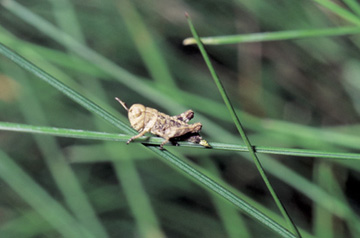
Figure 17. Third instar stage of a migratory grasshopper.
Cutworms
Cutworms are another general pest of grass crops. Some, such as the army cutworm, feed on foliage above ground, while others, such as the red-backed cutworm and glassy cutworm, sever plants at or below the soil surface. Most cutworm species in western Canada have one generation/year. Wilted, severed, missing or heavily defoliated plants are characteristic of cutworm injury.
Weather or natural enemies, including predators, parasites and diseases, usually control cutworms. In an establishment year, cultivation of the field in early spring and then delaying seeding for several weeks may help to decrease cutworm damage. If extensive damage occurs, the application of an insecticide in the evening, when these insects are most active, may be warranted. Special care should be taken to treat the interface between damaged and undamaged areas of the field.
Glassy cutworm is a sporadic pest of tall fescue in western Canada. Adult moths of glassy cutworm have dark grey forewings with light grey and blackish markings and two light grey spots near the center of each wing. The wingspan is 30 to 40 mm. The moths fly from July to early September and lay eggs near the base of grasses, and larvae hatch soon after.
Larvae have a translucent, greenish-white, smooth body with a reddish-brown head and neck shield (Figure 18). Mature larvae measure 35 to 40 mm in length. Pupae are reddish-brown, spindle shaped and roughly 30 mm in length (Figure 19). There is one generation per year.
The cutworm larva damages grass stands in the fall and the following spring by feeding on stems and crowns at or below the soil surface. Low and even moderate infestations may not cause visible damage if growing conditions are favorable. Drought appears to be an important factor favoring population increases of glassy cutworms.
Symptoms of glassy cutworm damage include poor growth or browning-off of above ground growth (Figure 20). Stands will usually show damage symptoms on higher areas of the field or in areas where chaff and/or straw accumulates.
Glassy cutworms rarely come to the soil surface, which makes them difficult to control with contact insecticides. Currently, there are no economic thresholds for glassy cutworms in grass seed crops.
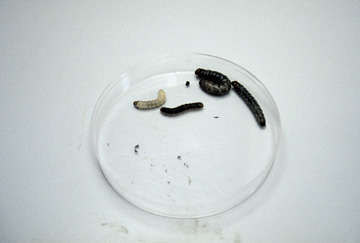 |  |  |
| Figure 18. Glassy cutworm larvae. |  | Figure 19. Glassy cutworm pupae. |
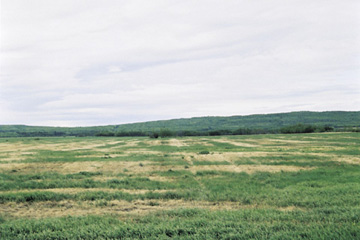
Figure 20. Grass seed field damaged by glassy cutworm.
Sod webworms
Sod webworms are small moths, the larvae of which overwinter in soil. Young larvae feed only on leaves and stems, while older larvae construct tubular webs or tunnels several centimetres long in the thatch, emerging at night to feed on grass leaves and shoots. Webworm moths fly erratically low to the ground, generally in late afternoon or evening, from June to August. Parasitism rates can be high following outbreak years.
Beetle larvae
White grubs, the larvae of several species of scarabaeid beetles, feed on the roots of all commonly grown turfgrasses and can occasionally infest forage grasses. They are considered the most important insect pests of cool season grasses in the United States. Larvae are variable in size, with cream-coloured bodies and dark heads; they typically curl into a "C" shape when disturbed.
Heavily infested grass crops develop irregular patches that can be lifted and rolled back like a carpet. Root pruning that does not kill plants outright may make the plants more susceptible to stress from drought.
White grubs are difficult to control with insecticides because the chemical must penetrate the thatch and soil to be effective. Irrigation, use of high water volumes when spraying, or rain after insecticide application will wash the insecticide into the soil and may increase efficacy of the treatment.
Silvertop
Tall fescue infrequently may show symptoms of silvertop, whereupon the plant appears healthy, but the seed head is bleached and sterile. Once silvertopped heads appear, nothing can be done to alleviate the condition in that season. Silvertop has been associated with many insect species, but the condition may be a generalized response to stress by the plant.
Harvesting
Generally, grasses require about 30 days from flowering to seed maturity (Figures 21 and 22). This period varies because flowering and seed development can last from several days to two weeks, resulting in seed heads emerging at different times and not ripening uniformly. Hot, dry weather reduces ripening time, and cool, moist conditions delay seed maturity.
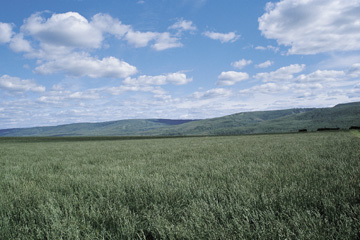 |  | 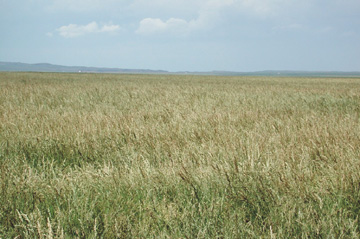 |
| Figure 21. Tall fescue seed field in the Peace River Region of Alberta. |  | Figure 22. Irrigated tall fescue seed field in southern Alberta. |
The tall fescue crop will be ready to swath anywhere from late July to early August. The seed heads will be brown at the top with a tinge of green, and 5 to 15 per cent of the seeds will be immature. Seeds will be in the hard-dough stage. Tall fescue is generally swathed as the risk of shattering is quite high, as the crop can lose 2 to 3 per cent moisture per day under good weather conditions.
At swathing, seed head moisture content should be between 40 to 45 per cent. Cutting too early will prevent proper seed development and increase dockage, while swathing too late will significantly increase seed shattering. In either case, yield losses will occur.
Moisture testing can help the producer to determine when to swath. To conduct a moisture test, collect a representative sample of seed heads from the field, usually in mid-afternoon. The sample must be weighed and dried down until all the moisture is removed. Dry the sample by using a conventional home oven set at 82°C for 4 or more hours. If using a microwave oven, place the sample in the oven along with a cup of water. This step will prevent the sample from burning and causing damage to the oven.
Dry the sample for five minutes, weigh it and then dry the sample for an additional two to three minutes. Weigh the sample again and continue with this process until the weight remains constant. Use the following formula to calculate per cent moisture: 100 x (wet weight - dry weight)/wet weight. An accurate scale must be used when weighing samples.
Producers also use other methods to determine when to swath:
- when a handful of seed heads are gently tapped on the palm of the hand and the seed shatters, then swathing should begin immediately
- when a seed head is pulled between the thumb and finger and there is 5 to 10 per cent loose seed
- when 75 per cent of the seed heads have matured
Stands can become lodged, so a pickup reel, sharp knife and snub-nosed guards are useful when swathing. Regardless of the machine used, the best time to swath is either in the morning or at night, as dew will minimize shattering. Tall fescue can produce substantial vegetation. Swathing widths should be 3.6 to 4.3 m to facilitate rapid drying of the swath.
Swaths can generally be combined 7 to 10 days after cutting, depending on the weather conditions. Harvesting at a seed moisture content of 16 to 17 per cent will reduce seed loss from shattering, but the seed must then be dried immediately to 12 per cent.
A properly adjusted combine is essential to produce maximum yields and high seed quality. Combine settings can also be used to help improve the chances of removing unwanted weed seeds such as wild oats, quackgrass and cleavers at the seed cleaning plant. Proper combine settings will vary from day to day, as well as during the day, depending on weather and moisture conditions of the swaths and seed.
When combining tall fescue, set the combine as you would for barley, but with a very low air fan speed, and adjust from this starting point. The clearance between the cylinder and concave should be adjusted to the point where hard rubbing action occurs, but not to the point of peeling the seed coat. Minimum air should be applied to keep the material flowing over the sieves without coming off the back in bunches. Combining is a slow process as it takes time for the seed to settle out from the straw on the walkers.
A flashlight with a 7.5 to 10 cm flat lens can be used to check to see if good seed is coming out of the back of the combine. A sample is taken from behind the combine and placed on the lens; the light from the flashlight will show good seed as having a dark spot at the germ end of the kernel. The combine can be adjusted accordingly.
Dockage is generally around 20 per cent. Lower dockage may be a sign of over threshing.
Seed drying and storage
Drying the crop in the field is best, but for safe storage and delivery, the seed should be air dried to 12 per cent as quickly as possible. Germination can be damaged very quickly if the seed is not dried down. Seed in the bin should be turned to improve air movement and drying effectiveness. Seed can be stored safely in bulk at 10 to
12 per cent. To maintain high germination, store seed under cool, dry conditions.
Post-Harvest Management
Removing residue
Crop aftermath is removed to improve field sanitation and reduce both disease and insect problems. Light penetration is enhanced with residue removal, and this approach stimulates the production of more and larger tillers. The straw should be baled and removed immediately after combining.
Research indicates that burning the residue doesn't enhance seed production in tall fescue over straw removal or grazing. In Saskatchewan (Table 14), mowing was a far superior management practice for subsequent seed production when compared to burning residue.
| Table 14. Effects of residue removal on the seed yield (kg ha-1) of irrigated tall fescue at Outlook, Saskatchewan |
| Treatment | 2000 | 2001 | Mean |
| None | 990 | 690 | 840 |
| Mow | 1,370 | 710 | 1,040 |
| Burn | 510 | 10 | 260 |
If a forage-type tall fescue has been grown, the stand can be grazed using moderate stocking rates to a height of 5 to 10 cm above ground. Tall fescue induces vegetative tillers in late summer and early fall, and these determine the number of reproductive tillers in the subsequent year.
Grazing should be monitored to ensure that plant crowns aren't damaged. The stand should regrow to at least 15 cm before freeze-up. If irrigating, a thorough late fall irrigation to field capacity will help reduce drought injury during winter and provide moisture for early spring growth.
Fertilization
Tall fescue should be fertilized in the fall after the stand has gone dormant. Under irrigated conditions, rates of 100 to 125 kg ha-1 of nitrogen should be sufficient with the higher rates being applied to older stands. In Manitoba, rates of 80 to 100+ kg ha-1 are suggested with higher rates used on stands 3 years or older.
Feed value of straw bales
A subsequent benefit of growing tall fescue seed crops is that seed producers can make use of the straw for livestock feed and possibly fall regrowth for grazing (Figure 23). However, producers must be aware that the endophyte Neotyphodium coenophialum may be present in tall fescue turf varieties (and the older forage-types), and it is important that they understand the effects that endophytes can have on livestock when utilizing straw, fall regrowth and especially seed screenings (see below). Endophyte-infected varieties of tall fescue are currently being developed that do not cause toxicity problems when fed to livestock.
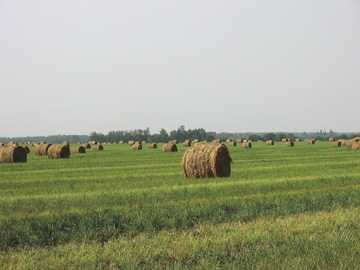
Figure 23. Tall fescue straw can have good feed quality.
The protein content of tall fescue straw is higher than other grass or cereal straws (Table 15). The quality of the straw will vary from field to field and year to year. Factors such as nitrogen fertility levels and weather conditions during harvest will affect the quality of grass seed straw.
If used for feed, the straw should not be considered a complete feed for wintering beef cows and must be tested for feed quality and supplemented with other feeds to balance the ration. Used in this manner, the nutritional requirements of cows can be met while maximizing the use of low quality roughage. It is also important to check for feeding restrictions for the herbicides that were applied to the crop.
Tall fescue regrowth can be a high quality feed. Samples collected from 5 tall fescue seed fields in the Peace River Region had an average of 12.6 per cent protein, 29 per cent ADF, 17 per cent TDN and DE of 3.22 Mcal/kg.
| Table 15. Nutritional value comparison of cereal and grass seed straws |
| Straw | # of samples | Protein % | ADF % | TDN % | DE Mcal/kg | NDF % |
| Barley |  | 4.6 | 46 | 47 | 2.05 |  |
| Wheat |  | 4.0 | 50 | 41 | 1.80 |  |
| Oats |  | 4.3 | 46 | 49 | 2.16 |  |
| Meadow bromegrass | 34 | 6.6 | 42 | 52 | 2.30 | 69 |
| Tall fescue | 31 | 8.4 | 40 | 56 | 2.49 | 64 |
| Creeping red fescue | 72 | 6.9 | 43 | 51 | 2.25 | 72 |
| Timothy | 38 | 4.9 | 39 | 57 | 2.51 | 66 |
| Smooth bromegrass | 14 | 5.4 | 38 | 58 | 2.54 | 64 |
| Crested wheatgrass | 2 | 3.9 | 37 | 60 | 2.62 | 64 |
Endophytes
Endophytes are fungi that live within the tall fescue plant and are transmitted by fungal strands in the seed. The fungi generally increase the vigor of infected plants by making them more tolerant to drought, insects, diseases, grazing and physical effects.
Turf grass breeders want high levels of endophyte present in the varieties they develop, as the fungi are very beneficial in a turf stand. On the other hand, breeders developing grasses for forage and livestock production select for low levels or the absence of endophytes.
The endophytes in tall fescue produce a toxin called ergovaline that has been implicated in producing harmful effects when consumed by livestock, particularly ruminant animals and horses.
Effects on ruminants include lowered prolactin levels, increased respiration rates, long-dull-rough hair coats, lower feed intakes, lower weight gains, higher rectal temperatures, decreased heart rates, decreased skin surface temperatures of the extremities such as ears, tails and lower legs, fat necrosis, fescue foot, decreased ruminal fiber digestion and increased sensitivity to heat and cold stress conditions.
Horses are considerably more sensitive to alkaloids than ruminants, and consumption has caused reproductive problems such as agalactia, thick placentas, spontaneous abortions, dead or weak foals at birth and rebreeding problems. Endophyte-infected tall fescue pastures, hay, seed screenings and straw should not be fed to horses.
Endophyte can only be transmitted by infected seed. A plant without the endophyte cannot become infected even though the plant right beside it may have the endophyte present.
Seed can be tested for per cent endophyte before seeding, and seed companies should be able to provide this information. Knowing endophyte levels in the seed will only provide a guideline as to whether a producer should be concerned or not about the level of endophyte toxin that could show up in straw, regrowth or seed screenings.
Endophyte levels in the seed do not always predict what concentrations of ergovaline will be present in the forage material. However, a seed lot that tests free of endophyte will produce forage that is also free of this fungus. The per cent endophyte in seed of different tall fescue varieties is listed at http://cropandsoil.oregonstate.edu/seed-ext/Pub/tf_endo_lev.htm.
Feed can be tested for ergovaline for a fee by sending samples to:
Oregon State University
Veterinary Diagnostic Lab
30th and Washington Way
Magruder Hall
Corvallis, Oregon 97331
Ph: (541) 737- 6541
Research conducted at Oregon State University has determined threshold levels of ergovaline in the diet that can produce clinical disease (Table 16). Keep in mind that threshold levels will vary depending on environmental conditions and the stress levels the animals are under.
| Table 16. Threshold levels of ergovaline in the diet that can produce clinical disease |
| Livestock species | Ergovaline parts per billion (ppb) |
| Horses | 300 - 500 |
| Cattle | 500 - 750 |
| Sheep | 1,000 - 1,500 |
Aldrich-Markham and Pirelli, 1995.
Seed and seed screenings can contain very high concentrations of ergovaline. Straw and fall regrowth may contain the toxin, but usually at comparatively low levels. The levels of ergovaline can vary from year to year on the same field or from one field to another even though the same seed source was used. This situation means that management and environmental conditions will have an effect on the levels of toxin present. Generally, higher rates of nitrogen and stress conditions such as drought on the crop will increase levels of toxin.
Feed should be tested if there are any safety concerns regarding the endophyte level. Once levels are known, the tall fescue can be mixed with other feed sources to reduce the risk. Results from a survey conducted in the Peace Region on ergovaline levels in tall fescue straw, regrowth and seed can be found at the following internet location. http://www1.agric.gov.ab.ca/$department/deptdocs.nsf/all/for1355?opendocument
Taking Out the Grass Stand
Traditional methods of terminating tall fescue stands include plowing, light discing and then a harrowing to prepare a smooth seed bed for the following annual crop. An alternative method to tillage for terminating a tall fescue stand is to spray the field with glyphosate, and direct seed the annual crop into the sod.
Compared to other forage species, tall fescue is relatively easy to kill with glyphosate (Table 17). Tall fescue regrows well after harvest and should be sprayed in the fall if sufficient regrowth is present. It is recommended to apply no less than 1.5 to 2.0 L ac-1 of glyphosate (360 g/L). Pre-harvest treatments of glyphosate on tall fescue seed crops are not recommended, as this approach will significantly reduce seed germination.
| Table 17. Control of several grasses following the application of 1 L ac-1 of glyphosate (360 g/L) - September 1993 at Edmonton |
 | Visual assessment of control (%) |
| Grass species | June 1994 | September 1994 | July 1995 |
| Meadow fescue | 78 | 96 | 74 |
| Orchardgrass | 86 | 26 | 14 |
| Timothy | 90 | 96 | 74 |
| Crested wheatgrass | 91 | 91 | 68 |
| Meadow bromegrass | 90 | 65 | 30 |
| Smooth bromegrass | 68 | 40 | 51 |
| Creeping red fescue | 66 | 34 | 0 |
| Tall fescue | 96 | 94 | 86 |
It is important to consider the timing of the herbicide application. Fall application of glyphosate to terminate the stand has several advantages over a spring application:
- improved forage and perennial weed control
- earlier seeding of the annual crop the following year
- better seed bed conditions as there is a longer period for the existing sod to decay
- higher soil moisture levels
- opportunity for a pre-seeding burn-off in the spring
All these benefits result in higher annual crop yields when the stand is terminated in the fall compared to the spring. Although the preferred method is to eliminate the stand in the fall (Figure 24), spraying the stand out in the spring and direct seeding glyphosate-tolerant canola or oats has also proven effective.
Winter damage in tall fescue can occur, and in the spring, if it appears the tall fescue will not make a seed crop, it is relatively easy to conduct a pre-seeding burn off with glyphosate and direct seed an annual crop into the sod (Figure 25). This method will eliminate the risk of having a year without crop revenue.
Most cereal, oilseed and pulse crops can be direct seeded into sprayed-out tall fescue stands. The annual crop selected will depend on seedbed conditions, potential soil herbicide residues and in-crop herbicide options.
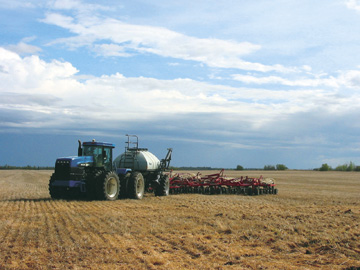 |  | 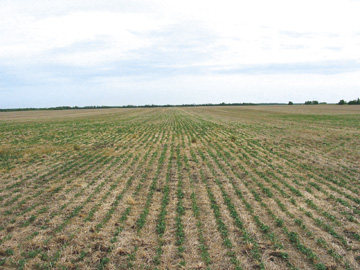 |
| Figure 24. Direct seeding an annual crop into a tall fescue stand sprayed out the previous fall. |  | Figure 25. Emergence of glyphosate-tolerant canola direct-seeded into tall fescue sprayed in the spring. |
Direct seeding glyphosate-tolerant canola into sprayed-out stands has worked very well as in-crop applications of glyphosate can control volunteer tall fescue and perennial weeds that may be present (Figure 26). Oats has also been shown to be a good crop to grow when direct seeded into sprayed out forage stands.
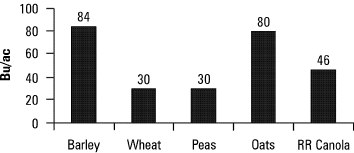
Figure 26. Yields of several annual crops direct-seeded into tall fescue at Falher, Alberta, 2004.
Disc openers or narrow hoe-type openers on drills are required when direct seeding into sprayed tall fescue stands. Soil test samples should be collected to determine any limiting nutrients. Tall fescue stands will usually be very deficient in nitrogen and may be low in phosphorus, potassium and sulphur. High fertility levels will be required to grow a healthy crop following a tall fescue stand.
Prepared by:
Henry Najda, Grass Seed and Forage Scientist - Alberta Agriculture, Food and Rural Development
Calvin Yoder, Forage Seed Specialist - Alberta Agriculture, Food and Rural Development
Contributing authors:
Dan Cole, Weed Specialist - Alberta Agriculture, Food and Rural Development
Dr. Bruce Coulman, Forage Breeder - Agriculture and Agri-Food Canada, Saskatoon, SK
Dr. Nigel Fairey, Research Scientist, Grass Seed Production - Agriculture and Agri-Food Canada, Beaverlodge, AB
Dr. Bruce Gossen, Forage Pathologist - Agriculture and Agri-Food Canada, Saskatoon, SK
Gerald Huebner, Crop Specialist - Manitoba Agriculture, Food and Rural Initiatives
Mark Johns, Forage Specialist - Alberta Agriculture, Food and Rural Development
Dr. Juliana Soroka, Forage Entomologist - Agriculture and Agri-Food Canada, Saskatoon, SK
Michel Tremblay, Forage and Grass Seed Specialist - Saskatchewan Agriculture, Food and Rural Revitalization
Michelle Watts, Research Manager - Manitoba Forage Seed Association
David Wong, Market Specialist - Alberta Agriculture, Food and Rural Development
References:
Alberta Forage Crops Advisory Committee. 1981. Alberta Forage Manual. Alberta Agriculture. Agdex 120/20-4. 87 pp.
Aldrich-Markham, S., and G. Pirelli. 1995. Endophyte toxins in grass seed fields and straw. Oregon State University Extension Service, Corvallis, OR. EM 8598.
Bailey, K.L., B.D. Gossen, R. Gugel and R.A.A. Morrall (eds.). 2003. Diseases of field crops in Canada. Canadian Phytopathological Society, Saskatoon, SK. 290 pp.
Beirne, B.P. 1971. Pest insects of annual crop plants in Canada. 1. Lepidoptera. II. Diptera. III. Coleoptera. Memoirs of the Entomol. Soc. Canada No. 78. 124 pp.
Breen, J.P. 1993. Enhanced resistance to fall armyworm (Lepidoptera: Noctuidae) in Acremonium endophyte-infected turfgrasses. J. Econ. Entomol. 86: 621-629.
Buckner, R.C. and L.P. Bush (ed.) 1979. Tall fescue. Agron. Monogr. 20. ASA, CSSA, and SSSA, Madison, WI. 351 pp.
Buckner, R.C., C.M. Rincker, P.B. Burrus, R.M. Cressman, and C.S. Garrison. 1972. Effects of two diverse environments on seed production characteristics of tall fescue hybrid derivatives. Crop. Sci.
12: 264-268.
Burr, J. The Scotts Company. Personal communication on pollen release.
CAB International 1997. Forage Seed Production 1. Temperate Species. D.T. Fairey and J.G. Hampton (editors). CAB International, Oxford, UK and New York, USA. 420 pages.
Canadian Seed Growers' Association. 2005. Regulations for the Production of Pedigreed Seed Circular 6-2005 http://www.seedgrowers.ca/regulationsandforms/circular.asp.
Canadian Seed Growers' Association.1996. Pedigreed forage seed production (3rd edition; S.R. Smith, Ed.). 53 pp.
Chastain, T.G. and D.F. Grabe. 1989. Spring establishment of turf-type tall fescue seed crops with cereal companion crops. Agron. J. 81 (3): 488-493.
Chastain, T.G. and W. C. Young III. 1998. Vegetative plant development and seed production in cool-season perennial grasses. Seed Sci. Res. 8: 295-301.
Cole, D.E. and N. Olstad. 2004. Tolerance of forage crops to herbicides. Alberta Agriculture, Food and Rural Development. 143 pp.
De Ruiter, J.M. and M.D. Hare. 1993. Early establishment and growth of tall fescue (Festuca arundinacea Schreb.) seed crops under barley (Hordeum vulgare L.) cover.
J. Applied Seed Prod. 11: 26-33.
Fairey, N.A. and L.P. Lefkovitch. 1993. Agronomic feasibility of producing seed of tall fescue in the Peace River region. Can. J. Plant Sci. 73: 123-129.
Fairey, N.A. and L.P. Lefkovitch. 1998. Effects of method, rate and time of application of nitrogen fertilizer on seed production of tall fescue. Can. J. Plant Sci. 78:453-458.
Fairey, N.A. and L.P. Lefkovitch. 1999. Crop density and seed production of tall fescue (Festuca arundinacea Schreber). 1. Yield and plant development. Can. J. Plant Sci. 79: 535-541.
Fairey, N.A. and L.P. Lefkovitch. 1999. Crop density and seed production of tall fescue (Festuca arundinacea Schreber). 2. Reproductive components and seed characteristics. Can. J. Plant Sci. 79: 543-549.
Fairey, N.A. and L.P. Lefkovitch. 2001. Effect of post-harvest management on seed production of creeping red fescue, tall fescue, and Kentucky bluegrass in the Peace River region of north-western Canada. Can. J. Plant Sci. 81:693-701.
Fisher, G., J. DeAngelis, D.M. Burgett, H. Homan, C. Baird, R. Stoltz, A. Antonelli, D. Mayer and E. Beers. 1995. Pacific Northwest insect control handbook. Oregon State University Extension Service, Corvallis, OR. 346 pp.
Hare, M.D. 1992. Time of establishment affects seed production of 'Grasslands Roa' tall fescue (Festuca arundinacea Schreb.). J. Applied Seed Prod. 10: 19-24.
Hare, M.D. 1993. Vernalization and juvenility in tall fescue. J. Applied Seed Prod. 11: 73-79.
Hare, M.D. 1994. Effect of vernalization and tiller age on seed production in tall fescue. J. Applied Seed Prod.
12: 77-82.
Hare, M.D. 1994. Post-harvest and autumn management of tall fescue seed fields. New Zealand J. Agric. Res.
36: 407-418.
Hare, M.D. 1994. Autumn establishment of three New Zealand cultivars of tall fescue (Festuca arundinacea Schreb.) for seed production. New Zealand J. Agric. Res. 37: 11-17.
Hare, M.D. and J.M. DeRuiter.1993. Seed Production of tall fescue (Festuca arundinacea Schreb.) established under a barley (Hordeum vulgare L.) cover crop. New Zealand J. Agric. Res. 36: 419-428.
Hare, M.D. and M.P. Rolston. 1990. Nitrogen effects on tall fescue seed production. J. Applied Seed Prod.
8: 28-32.
Hare, M.D., M.P. Rolston, W.J. Archie and J. McKenzie 1990. 'Grasslands Roa' tall fescue seed production: research and practice. Proc. New Zealand Grassland Assoc. 52: 77-80.
Hardy BBT Limited. 1989. Manual of plant species suitability for reclamation in Alberta - 2nd Edition. Alberta Land Conservation and Reclamation Report No. RRTAC 89-4. 436 pp.
Heide, O.M. 1994. Control of flowering and reproduction in temperate grasses. New Phytol. 128: 347-362.
Hill, M.J. 1980. Temperate pasture grass seed crops: Formative factors. pp. 137-151. In P.D. Hebblethwaite (ed.) Seed production. Butterworths, London.
Ibrahim, A.E.S. and R.V. Frakes. 1984. Variability and interrelations of seed yield components in tall fescue (Festuca arundinacea Schreb.). Genet. Agr. 38: 387-398.
Kelly, A.F. 1988. Seed production of agricultural crops. Longman Scientific & Technical, Longman Group.
227 pp.
Moyer, J.L. and K. W. Kelley. 1995. Broadleaf herbicide effects on tall fescue (Festuca arundinacea) seedhead density, forage yield and quality.
Najda, H.G. and A. Kruger. 2002. Effect of companion cropping on the seed yield of irrigated tall fescue. pp. 47-49. In Grass seed and forage crops program annual report. CDCS Publ. 2001-9.
Otani, J., R. Byers, H. Phillip, L. Dosdall and C. Yoder. 2001. Glassy cutworm fact sheet. http://www1.agric.gov.ab.ca/$department/deptdocs.nsf/all/prm2497
Potter, D.A. and S.K. Braman. 1991. Ecology and management of turfgrass insects. Ann. Rev. Entomol. 36: 383-406.
Rolston, M.P., J.S. Rowarth, W.C. Young III and G.W. Mueller-Warrant. 1997. Grass seed crop management. pp. 105-126. In Fairey, D.T. and J.G. Hampton (eds.) Forage seed production. Volume 1: Temperate species. CAB International.
Sleper, D.A. and R.C. Buckner. 1995. The fescues. pp. 345-356. In R.F. Barnes, D.A. Miller, and C.J. Nelson. (eds.) Forages. Volume 1. An introduction to grassland agriculture. 5th ed. Iowa State Univ. Press. Ames, IA.
Sleper, D.A. and C.P. West. 1996. Tall fescue. pp. 471-502. In L.E. Moser, D.R. Buxton, and M.D. Casler. (eds.) Cool-Season Forage Grasses. Agron. Monogr. 34 Agronomy. ASA, CSSA, and SSSA, Madison, WI.
Soroka, J. 1991. Insect pests of legume and grass crops in western Canada. Agriculture Canada Publication 1435. Ottawa. 39 pp.
Suzuki, S. 1985. Analysis of seed production in relation to climatic conditions in tall fescue varieties. Proc. Int. Grasslands Congress. pp. 310-312.
Templeton, W.C., Jr., G.O. Mott and R.J. Bula. 1961. Some effects of temperature and light on growth and flowering of tall fescue, Festuca arundinacea Schreb. II. Floral development. Crop Sci. 1: 283-286.
Templeton, W.C. Jr., G.O. Mott and R.J. Bula. 1961. Some effects of temperature and light on growth and flowering of tall fescue, Festuca arundinacea Schreb. I. Vegetative development. Crop Sci. 1: 216-219.
Walsh, R.A. 1995. Festuca arundinacea. In Fire effects information system. USDA, Forest Service, Rocky Mountain Research Station, Fire Sciences Laboratory. URL: http:/www.fs.fed.us/database/feis/
[June 3, 2004].
Watson, C.E., Jr. and V.H. Watson. 1982. Nitrogen and date of defoliation effects on seed yield and seed quality of tall fescue. Agron. J. 74: 891-893.
Yoder, C., and Fournier B. 2002. Survey of endophyte content of turf grass seed stands in the Peace River Region. 6 pp. http://www1.agric.gov.ab.ca/$department/deptdocs.nsf/all/for1355?opendocument
Yoder, C. 2003. Survey of feed value of grass seed aftermath.
Young, W.C. III. 1997. Festuca arundinacea Schreb. (Tall Fescue) in the USA. Pages 287-296 in D.T. Fairey and J.G. Hampton (editors) Forage Seed Production 1. Temperate Species. CAB International, Oxford, UK and New York, USA.
Young, W.C., III, H.W. Youngberg and T.B. Silberstein. 1998. Management studies on seed production of turf-type tall fescue: I. Seed yield. Agron. J. 90: 474-477.
Young, W.C., III, H.W. Youngberg and T.B. Silberstein. 1998. Management studies on seed production of turf-type tall fescue: II. Seed yield components. Agron. J. 90: 478-483.
Young, W.C., III, M.E. Mellbye, G.A. Gingrich, T.B. Silberstein, S.M. Griffith, T.G. Chastain and J.M. Hart. 1999. Defining optimum nitrogen fertilization practices for perennial ryegrass and tall fescue seed production systems in the Willamette Valley. p. 1-6. In W.C. Young III (ed.) 1999 Seed Production Research, Dept. of Crop and Soil Science Ext/Crs 114, 4/00.
Funding provided by:
Factsheet content development contributed by:

Source: Agdex 127/15-3. April 2005. |
|